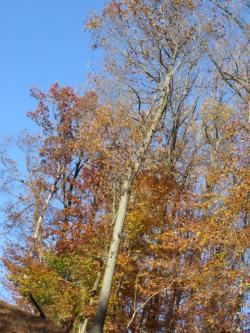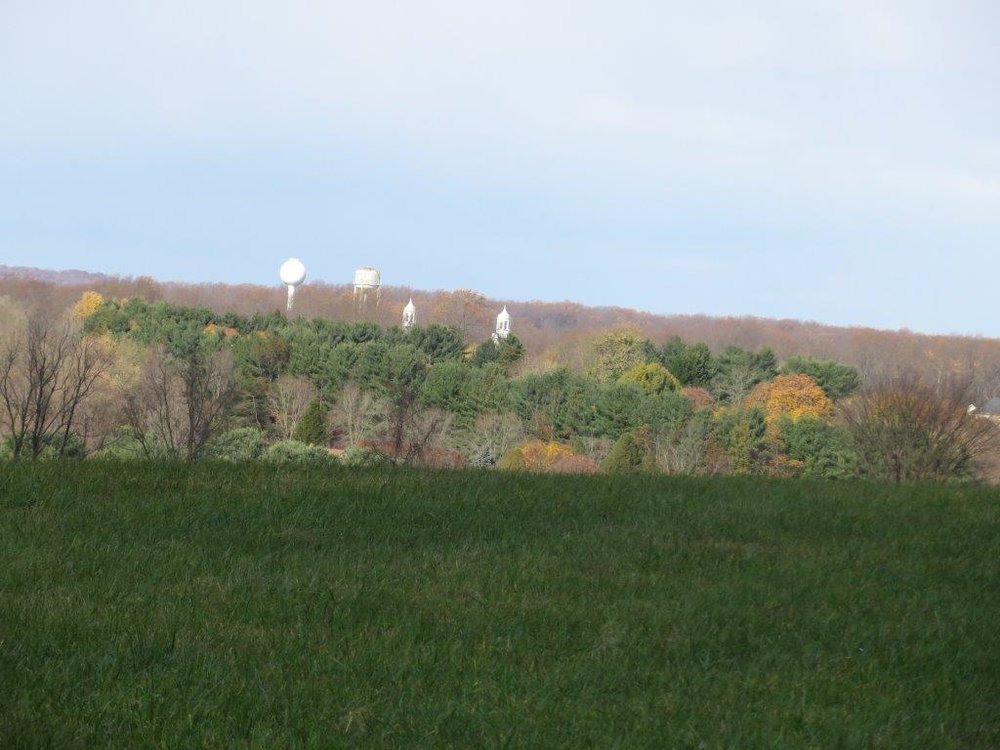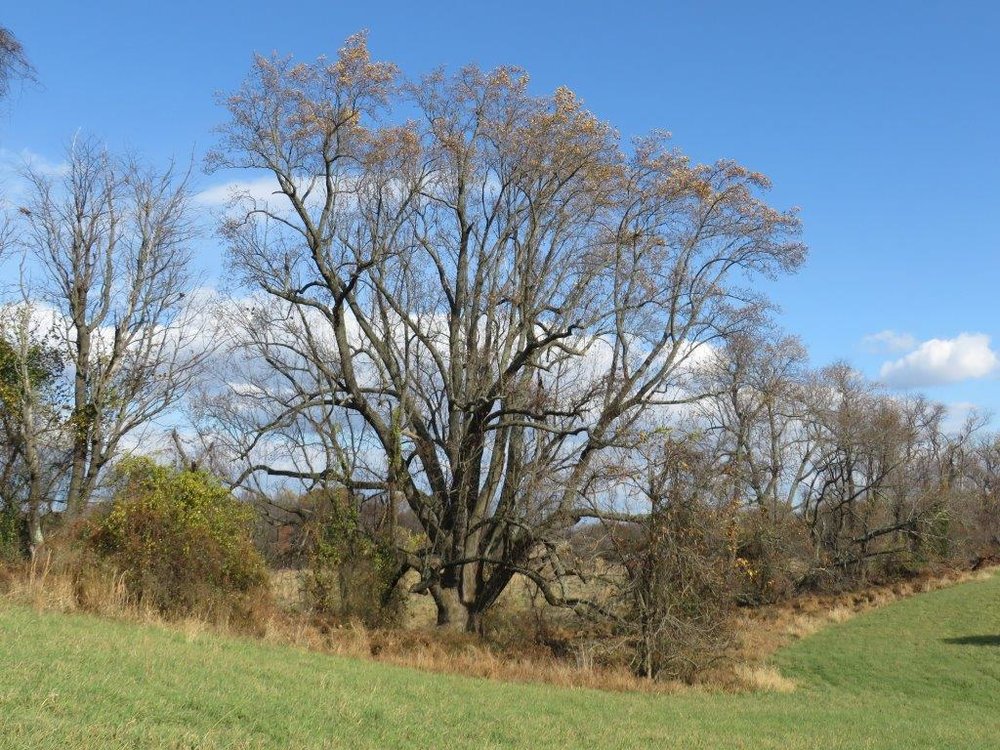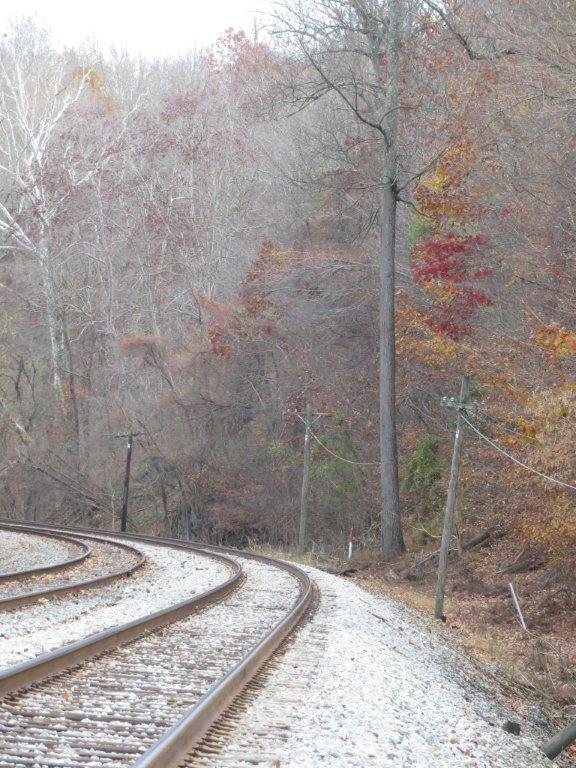Hike to the Patapsco River
/ I joined a group to hike from the Howard County Conservancy’s Mt. Pleasant Farm to the Patapsco River (Patapsco Valley State Park). We hiked along the farm's cut grass trail, then through a field of cut hay…to the forest.
I joined a group to hike from the Howard County Conservancy’s Mt. Pleasant Farm to the Patapsco River (Patapsco Valley State Park). We hiked along the farm's cut grass trail, then through a field of cut hay…to the forest. 
A stone marker from 1800 shows the boundary of the Mt. Pleasant Farm.

 The undulations of the path took us up and down but averaged ‘down’ on the way to the river and ‘up’ on the way back.
The undulations of the path took us up and down but averaged ‘down’ on the way to the river and ‘up’ on the way back.
The leaves had fallen - obliterating the trail and smaller fallen limbs. We scrambled over larger deadfall and churned the deep leaf mulch on the inclines. The moss was so green against the dulling brown of the leaves that it sometimes seemed to glow. In fact - any bit of green is eye catching in the late fall forest.

 The river view was on the other side of railroad tracks. We listened for a train whistle but only a maintenance vehicle came along the track while we were there. Horsetails grew through the rocks of the rail bed on the river side. Sycamores grow along the river - taking on their white ‘ghost tree’ look of winter now that their leaves were gone.
The river view was on the other side of railroad tracks. We listened for a train whistle but only a maintenance vehicle came along the track while we were there. Horsetails grew through the rocks of the rail bed on the river side. Sycamores grow along the river - taking on their white ‘ghost tree’ look of winter now that their leaves were gone.
There were a few examples of shelf fungus that I noticed on the hike back.
The beech trees with their smooth bark were the most frequent tree along the streams down to the river. Some of the trees still held a few leaves. I like the look of the tree trunks of varying sizes in the forest nearly devoid of foliage.























